Every autumn, as the lush alpine meadows begin their slow turn toward winter, the small Swiss village of Gstaad plays host to a centuries-old tradition known as the Züglete. It’s a tradition deeply rooted in the village’s history, marking the seasonal migration of cattle from their high-elevation summer pastures down to year-round barns in Gstaad’s Saanen Valley. For those who live in Gstaad and its surrounding farms, it’s a moment of pride and celebration. For visitors, it offers a way to connect with pastoral life — and enjoy a bit of Swiss culture, plus some great cheese.
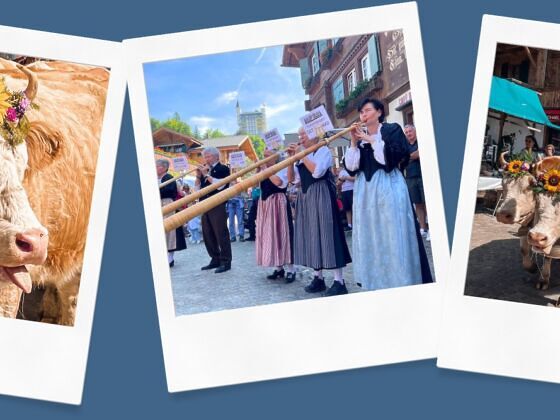

Camera Roll: Scenes From the Colorful Züglete Cow Festival in Gstaad, Switzerland
The word “Züglete” roughly translates to “procession” or “move” in Swiss-German, which is what it is: a slow parade of cows and their herders through the streets. It happens in several small villages throughout Switzerland in early fall. The cows, adorned in flower crowns, are celebrated by spectators as they sport traditional, oversized bells. On the morning of the Züglete, the sounds of cowbells started echoing through Gstaad as the herders, dressed in traditional Swiss attire, begin the long trek down the steep paths from the mountains; I could hear it from my hotel room by 8 AM. In town, vendors set up tables selling homemade crafts and snacks, markets and cafes are packed with locals and visitors alike, and traditional singers and musicians take the metaphorical stage between each bovine procession.
View this post on Instagram
There was something quietly profound about the Züglete, especially in a place like Gstaad, often associated with luxury tourism and Chanel and Prada stores. It was almost funny to see cows, goats, dogs, and traditionally dressed farmers parade down the street directly in front of the glamorous designer boutiques, seemingly highlighting the fact that Gstaad is still, at heart, a farming town.
The tradition has been going on for centuries, but about a decade ago, the tourism board decided to organize the individual cow processions and parades into one bigger, more organized celebration. It’s usually held on the last Saturday of August and is free to attend. It’s lively, colorful, and exciting, with a noticeable energy running through the crowd when viewers get a glimpse of the next round of cows entering the village.
I was lucky enough to attend the 2024 Gstaad Züglete, and found time to take a few photos when I wasn’t admiring the many friendly dogs in attendance, tasting cheeses and Swiss wine, or browsing the local crafts (and high-end chocolate) available from throughout Switzerland.

Roughly 10 farming families participate in the Zülete, but there are several dozen farmers around Gstaad who bring their cows to lower pastures at some point in early fall. The large bells are just for the parade, and will likely be hung outside the barns once the cows arrive. When you see the large bells hanging on a barn or farmhouse, you’ll know the cows have already arrived for the season. Photo: Suzie Dundas
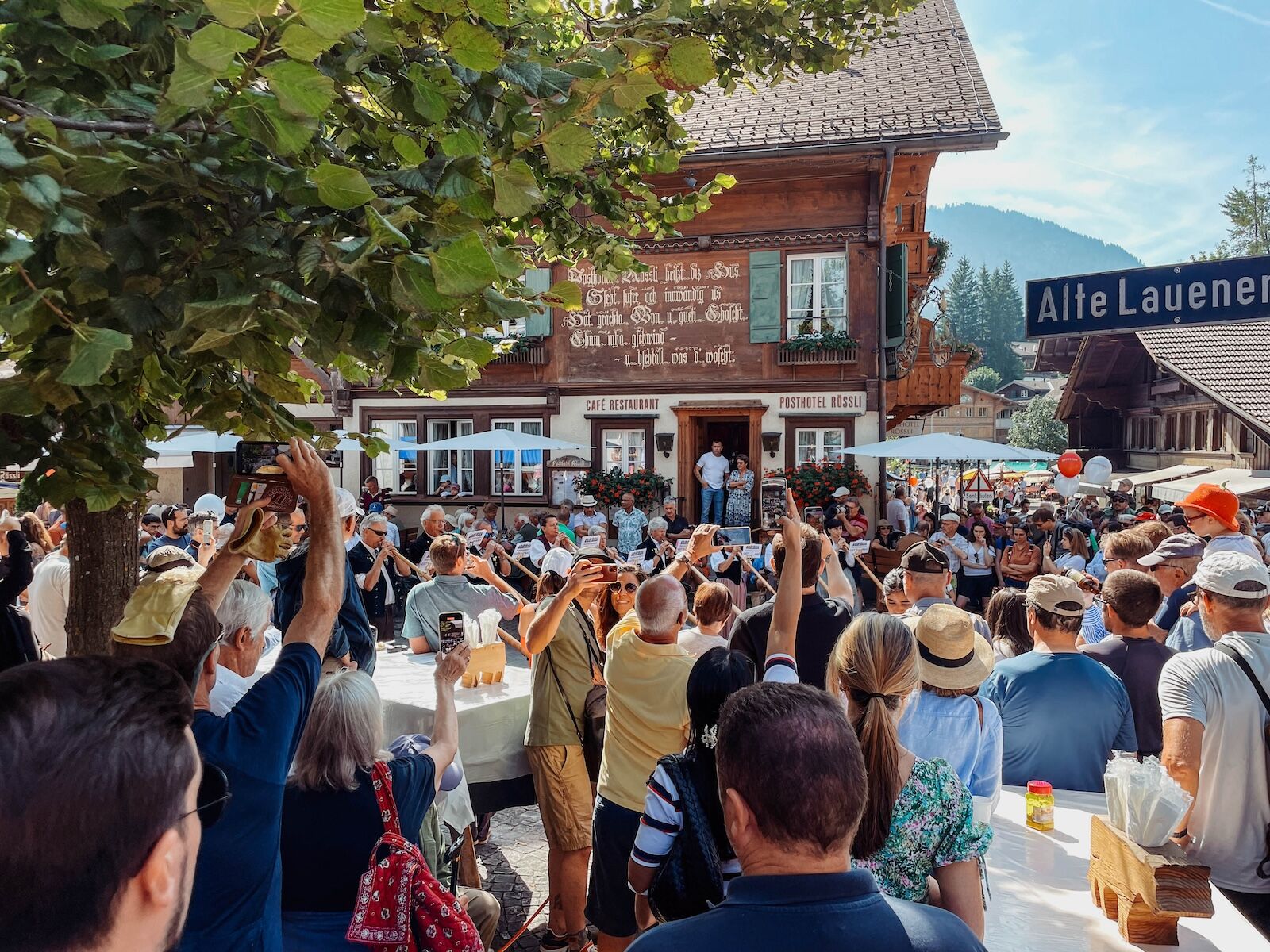
Gstaad is never very busy in the summer, with the exception of the weekend of the Züglete. Locals and out-of-town visitors alike come to celebrate both the cows and the end of summer in the mountains. It can be one of the busiest weekends of the year in Gstaad. Photo: Suzie Dundas
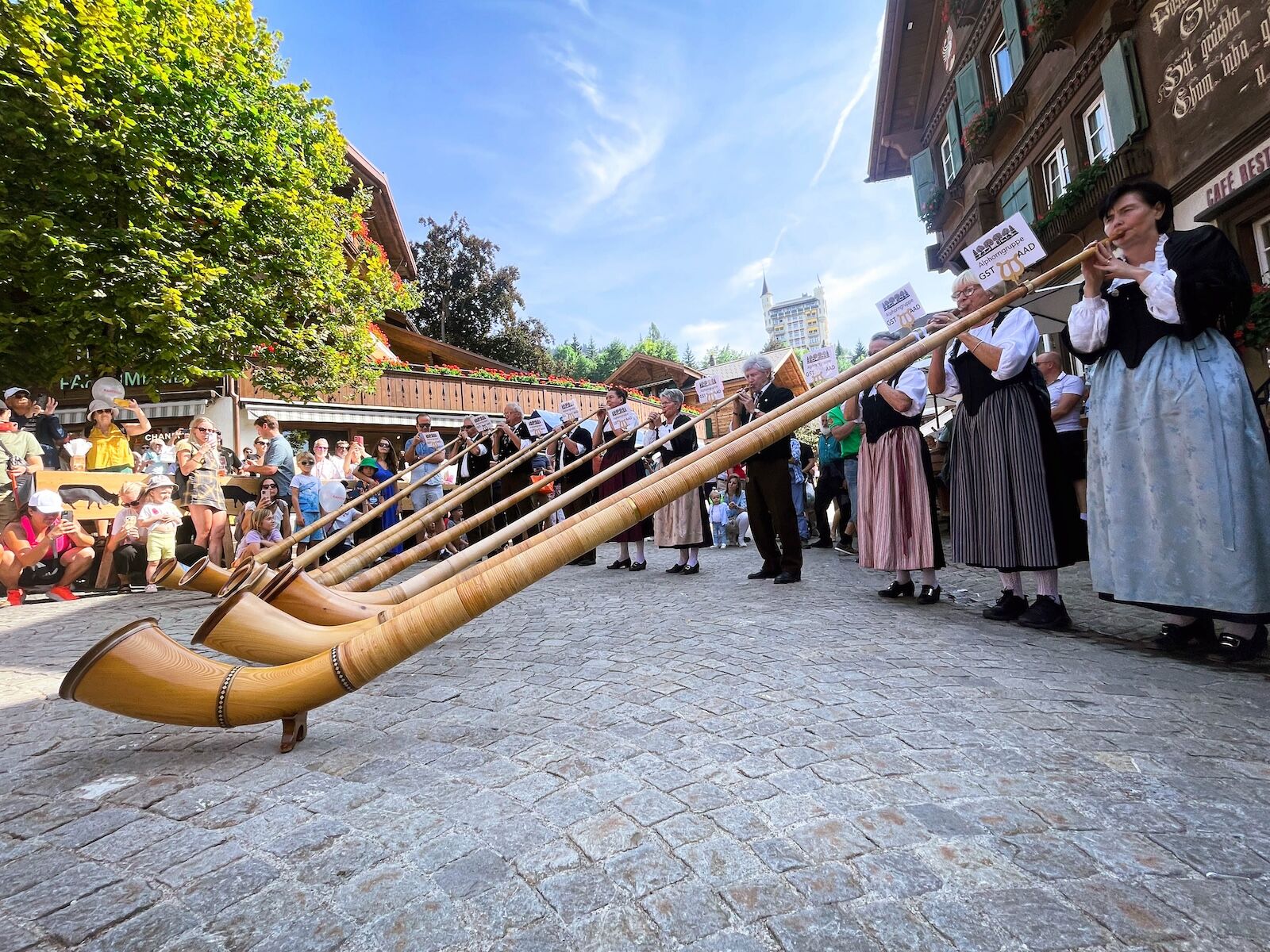
Alpenhorning is a long-standing tradition in Gstaad, Switzerland, deeply rooted in the pastoral culture of the Swiss Alps. The alpenhorn, or alphorn, has long been associated with Swiss Alpine regions, as its distinctive, resonant sound was traditionally used to communicate across mountain valleys. Over time, alpenhorning has evolved from a practical tool into a cultural tradition and is often played at Swiss festivals and events. The instrument itself is typically handmade from spruce wood and can be up to nine feet long. This is Alphorngruppe Gstaad, the town’s local alpenhorning band. Photo: Suzie Dundas
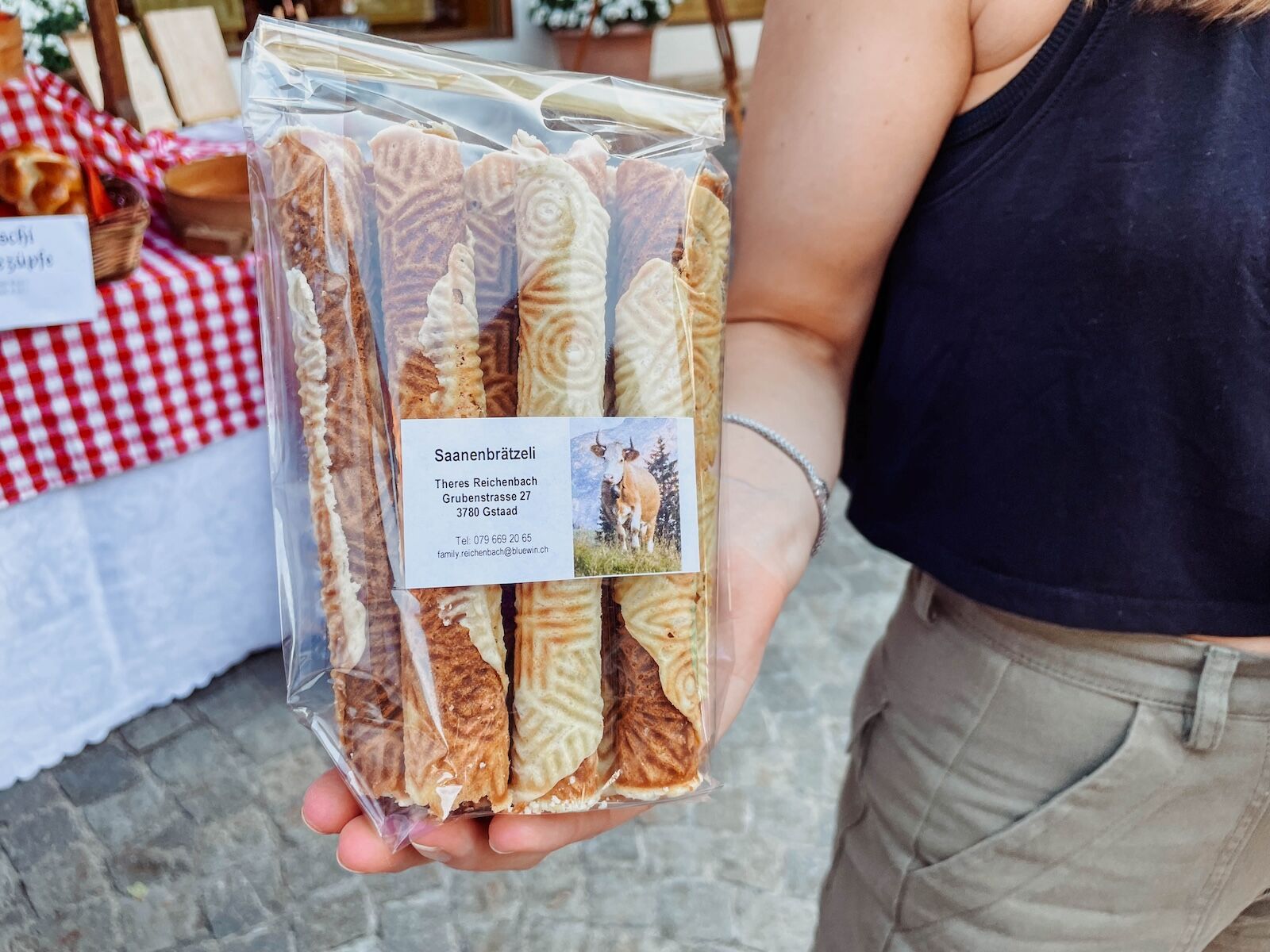
Saanenbrätzeli are a traditional pastry from the Saanenland region of Switzerland, particularly from the town of Saanen (about 1.5 miles from Gstaad). They’re shaped like tubes and have a hard, crunchy texture, more akin to a cracker. They have a subtle sweetness and rich buttery flavor, thanks to being made with local butter. Saanenbrätzeli are usually sold served at festivals, special occasions, and celebrations in the region, symbolizing the area’s culinary heritage. Many local bakeries and families still use traditional recipes passed down through generations to make the beloved pastry, preserving its cultural significance in Swiss Alpine food traditions. At the Gstaad Züglete, several vendors were selling their own homemade versions. Photo: Suzie Dundas

Flower crowns are a significant part of the Gstaad Züglete as a way to celebrate and honor the cows and show how much the farmer value them. Each farming family makes their own crowns from local wildflowers, symbolizing the connection between the animals, the land, and the changing seasons. They also add to the festive atmosphere of the Züglete, as you’ll find flowers on vendor tables, performers outfits, and outside many shops and storefronts. These cows belong to the Johann von Grünigen family, known for making some of the most ornate crowns in the festival. The base for the crowns are the one-legged stools farmers use while milking the cows. Photo: Suzie
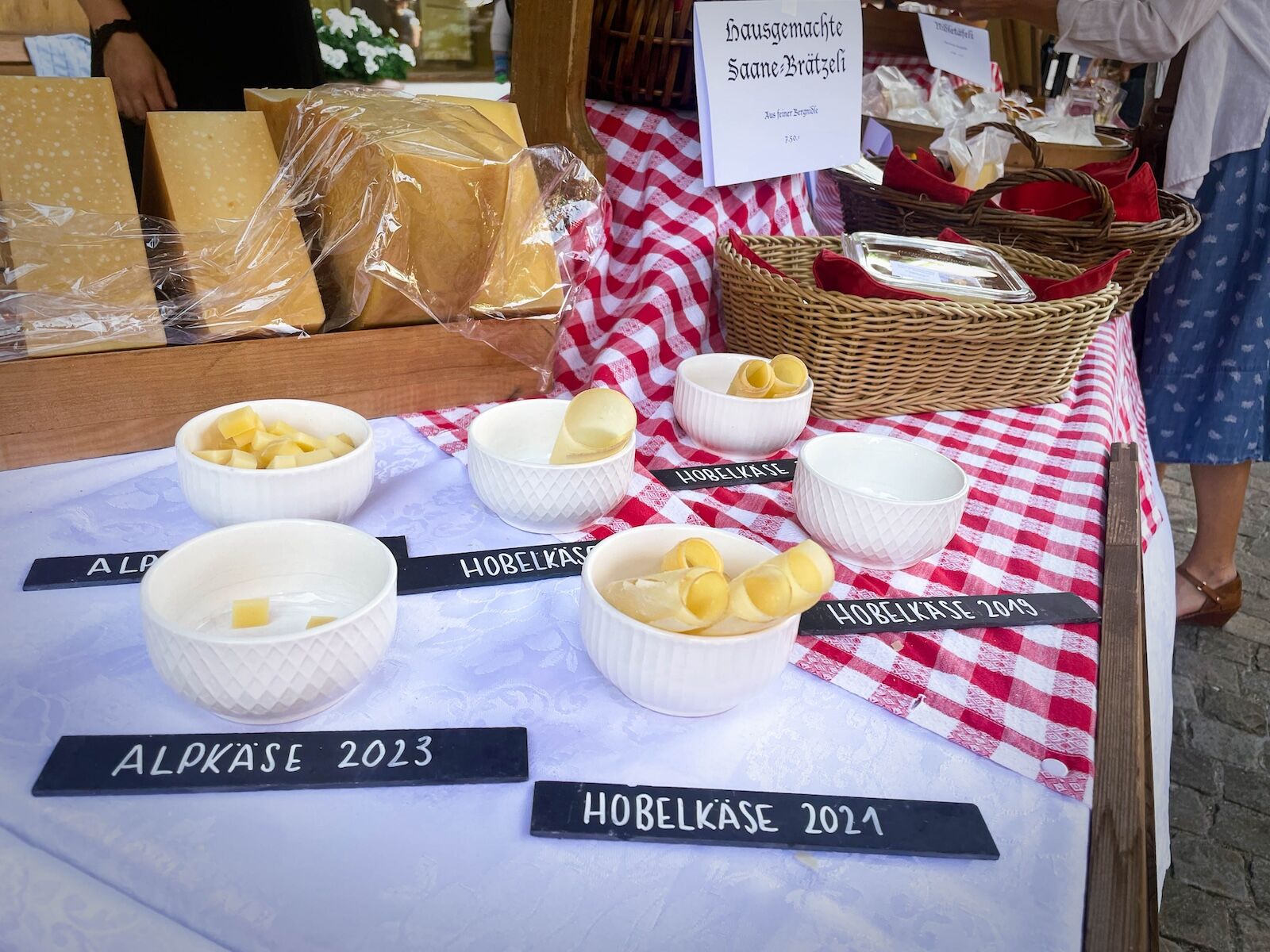
Food is a huge part of the Züglete festival, with booths selling cheese and breads, busy sidewalk cafes, outdoor wine tastings, and opportunities to buy and try waffles, chocolate, and just about every other Swiss treat you can think of. I’d recommending picking up a kit to make fondue or raclette at home; it doesn’t get much more “shop local” than when you can buy cheese as the cows it came from walk by. Photo: Suzie Dundas
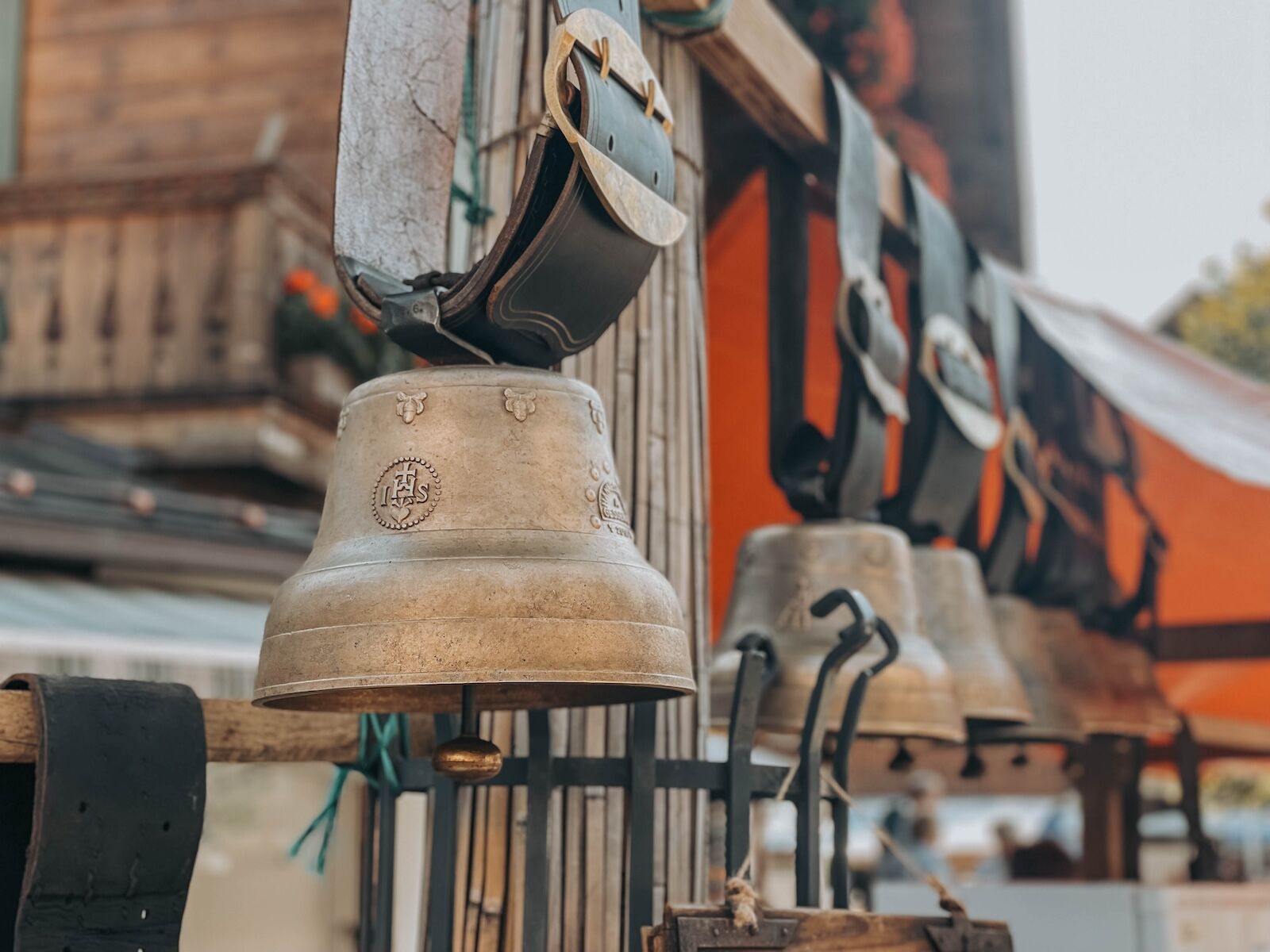
The oversized bells worn by cows in the Züglete are called “treicheln” or “glocken.” The bells help farmers find their grazing cows in the vast and often foggy mountain pastures. The distinct sound of the bells guides herders to their cattle, making it easier to manage them over large distances in the rugged Alpine terrain. In modern times, the bells have become a significant part of the visual and auditory experience of the Züglete, preserving a deep-rooted connection to the region’s bygone traditions. The bells worn by cows on most days are much smaller, but the big bells come out to celebrate the Züglete. If you’re in Gstaad around late August, you’re likely to hear them any time you’re outside. Photo: Suzie Dundas

Cheese is an essential part of Switzerland’s food culture, and the cows who parade through the streets during the Züglete are the same cows used to make the region’s famous alpenkäse, or alpine cheese. Other types of cheese made in the area include Gruyère (actual Gruyère, from the town of Gruyère) and Emmental, among many others. Numerous vendors sell all types of locally made Gstaad cheese at the Züglete, and yes, samples are almost always available. Photo: Suzie Dundas

The cows are adorable, and many farmers say the older cows get excited when they see the bells and flower crowns come out. However, this cow is just hot. It was a warm day when the cows paraded through the village, and many stopped at the public oversized fountains in town to grab a drink before they continued to their winter barns. Photo: Suzie Dundas
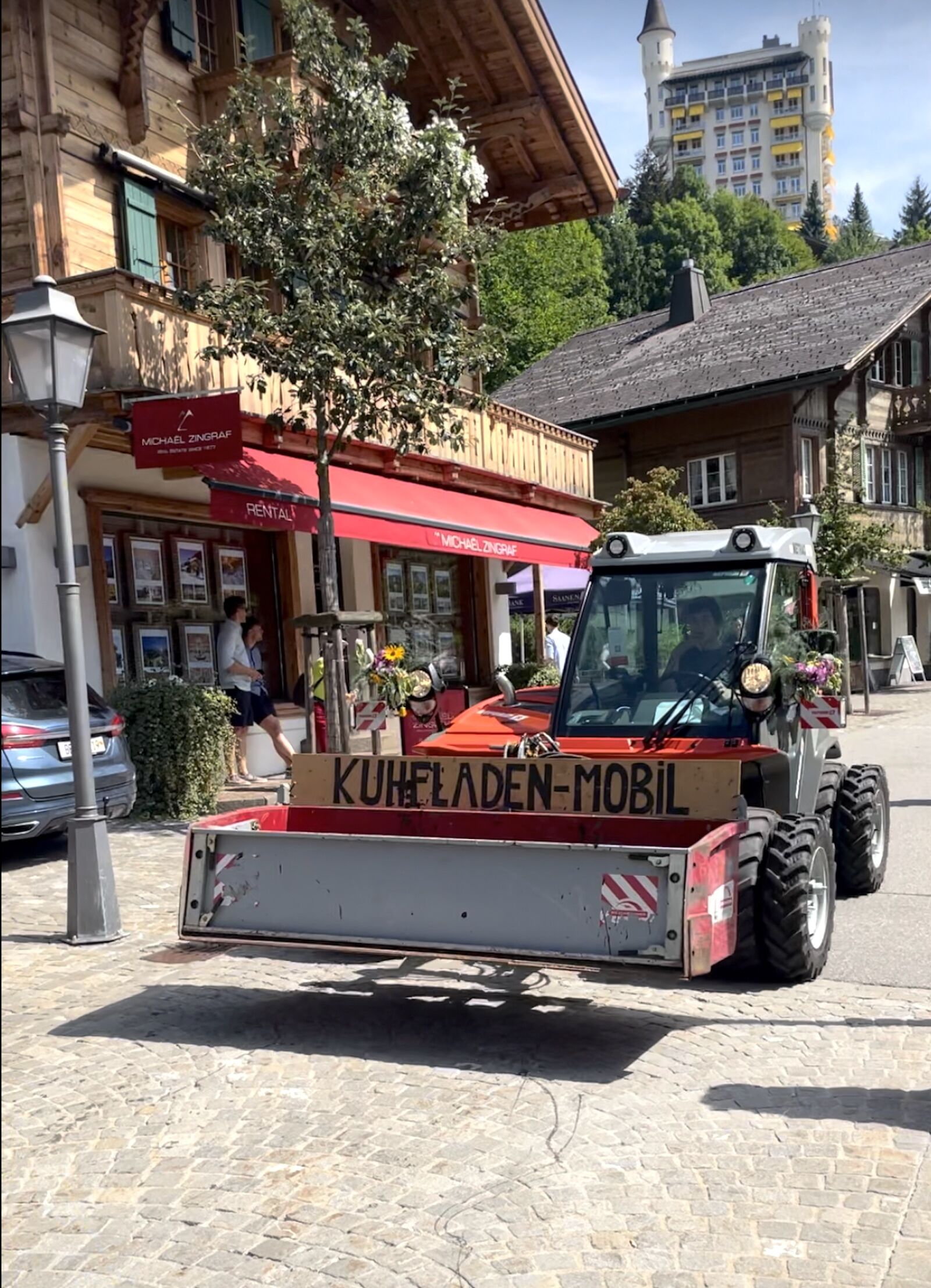
Three cheers for the unsung heroes of the parade. Now you know how to say “cow dung” in German. Photo: Suzie Dundas